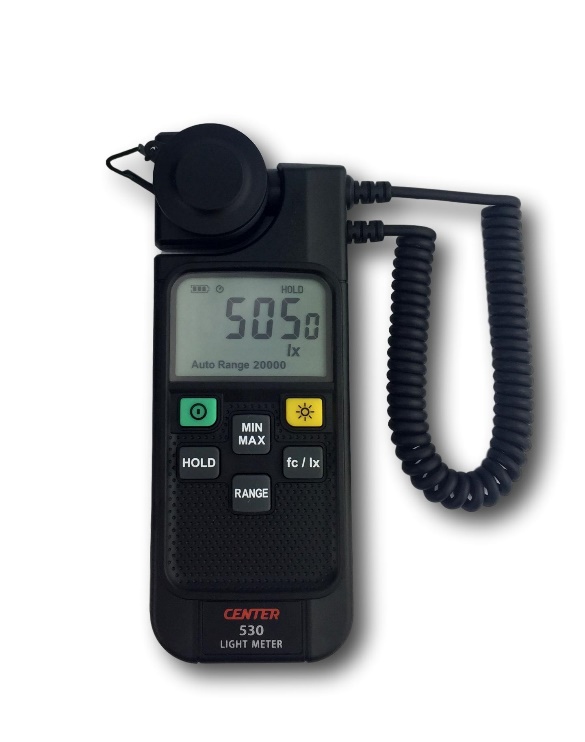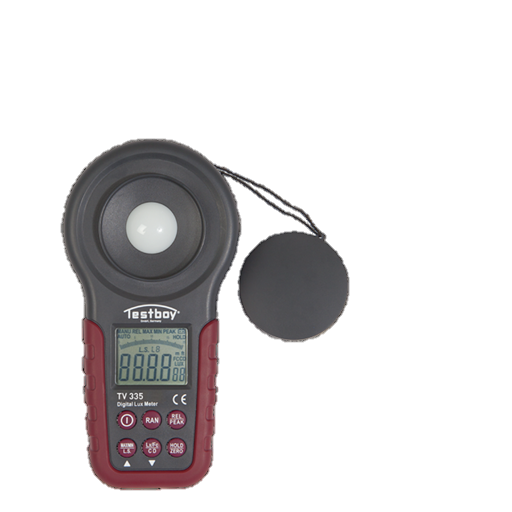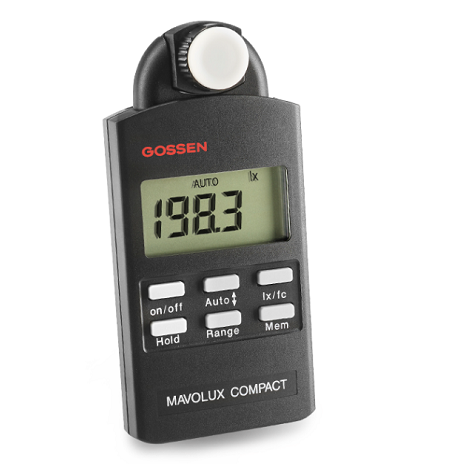What is a light meter and why use one?

Light Meters are a useful tool to measure light intensity and give the user a lux output. That’s great and all, but why measure light?
In this article, we will tell you why measuring light is essential across a range of applications, from measuring light intensity in workplaces, public spaces and on roads.
About Light Meters
Light meters as the name suggests, measure light intensity. They are interchangeably known as either light meters or lux meters and have a range of applications including measuring light intensity within workplaces and public areas like parks, carparks, roads and rail lines.
The most common measurement output of illuminance for light meters is a lux value. One lux is equal to one lumen per square meter. To put the lux value measurement into some perspective a full moon on a clear night can be expected to have a lux value of 0.05-0.3, sunrise or sunset on a clear day is around 400 lux and direct sunlight can be anywhere from 32,000 -100,000 lux.
Why Use a Light Meter?
There is a wide range of uses of light meters across many applications and industries. Below we have listed two key examples;
OH&S in the workplace
Lighting in general work areas must be of an adequate level for work to be performed in a safe manner; this means light must not too bright and not too dim. In Australia, the recommended lux value for general working areas is 160. Although some areas require more lighting; for example, office area lighting should be within the range of 320-400 lux. Access areas, stairs, specific areas and emergency lighting also have minimum recommended values for OH&S.
Why?
If light levels in the workplace are too high glare or reflected light could cause headaches and impair vision. Conversely, if light levels are too low, this can cause eye strain, headaches and, the working environment may become hazardous, i.e. stairways become trip hazards.
Public Spaces
Public spaces such as parks, carparks and general street need to be well illuminated to create a safe environment, and well-lit areas can also act as a crime and vandalism deterrent.
Adequately illuminated roads are safer for vehicles, cyclists and, pedestrians.
Why?
Monitoring appropriate street and public area lighting can create a safer environment and may allow for increased efficiency of electricity consumed if a lux meter is used to adjust the light to optimum levels.
Many local or state governments have recommendations and guidelines set out for lighting design for both roadways and public spaces.
Light Meter Examples
The Instrument Choice scientists have put together some exceptional examples of light meters to indicate the range available while outlining each examples application, features and measurement range.
Lightmeter
Product Code: IC-CENTER530

The CENTER530 is the ideal entry-level light meter for lighting investigations. With its detachable probe, you can use it as a single-handed unit, or use it with the sensor away from your body. Its wide measurement range also makes it suitable for measuring outdoor lighting
Application: Ideal for basic lighting investigations, both indoor and outdoor.
Outstanding Features: The device features a rotatable and detachable light sensor, Range display and a hold function.
Measurement range: 0.0-199,900 lux.
IC Inclusions: Free delivery, free returns and additional 1-year product warranty
Testboy TV 335 Digital LED/Lux Meter
Product Code: IC-TTV-335

The IC-TTV-335 is a digital lux meter built within a robust plastic housing and features a large LCD screen that provides a quick and reliable reading of the measurement result. This device boasts an incredible measurement range of up to 400,000 lux. It is also suitable to determine the light strength of LED lighting; this is due to photodiodes that are sensitive to artificial light.
Application: Specialises in indoor artificial lighting
Outstanding Features: Able to measure artificial light, measurement range up for 400,000 lux.
Measurement range: 0 to 400,000 lux
IC Inclusions: Free delivery, free returns and additional 1-year product warranty
MAVOLUX Compact 5032-7
Product Code: IC-M502C

The IC-M502C is a professional light meter that includes high-quality, luminosity function matching and cosine correction — designed for reliable measurement of daylight and all sources of artificial light including LED with a broad measuring range and pinpoint accuracy. All these features are in the device that is convenient for everyday use, consisting of a swivelling sensor, compact design and an easy-to-read display.
Application: Can be used for all lighting needs from natural and artificial indoor to outdoor use.
Outstanding Features: All sources of light can be effectively measured, 100 measurement values can be saved and retrieved, Accuracy class: Class C, DIN 5032-7, EN 13032-1 attachment B, CIE S 023.
Measurement range: 0 to 199,900 lux
IC Inclusions: Free delivery, free returns and additional 1-year product warranty
Conclusion
Light meters are a useful tool across a range of industries and applications. They can be used to ensure lighting is adequate in workspaces to help reduce the risk or workplace injury and downtime associated with sickness while helping to make roadways and public places safer. As a bonus, light meters can be used to optimise energy efficiency by ensuring you are are not overlighting an area.
Browse the full range of light meters here.
Need some help selecting the best light meter for your needs? Want more information on any of the products listed above? Contact us; we’re here to help! Call 1300 737 871 or email [email protected]
Also interesting
Let's face it, measuring with a tape measure can be a pain! Imagine a new and improved equivalent to the tape measure that can vastly simplify distance measurement and offer a host of features that makes recording data easy?
Dream no more, introducing the laser distance measuring tool!

An anemometer is a device that measures wind speed. There is a vast selection of types and models of anemometer available. Each design will have different properties and measurement methods that are suited to specific applications.
This article closely examines a specific type of anemometer – the Hot Wire Anemometer. We explain what they are, provide examples of applications and review selected Hot Wire Anemometer products.

